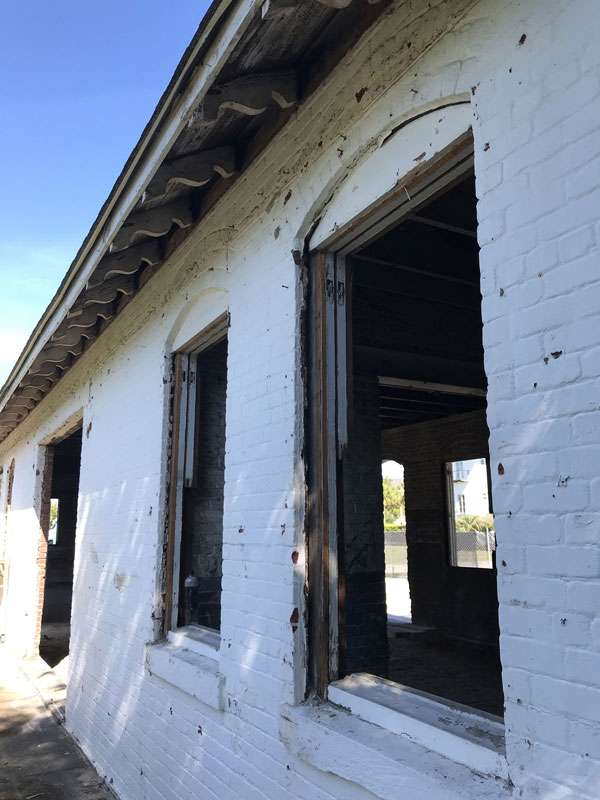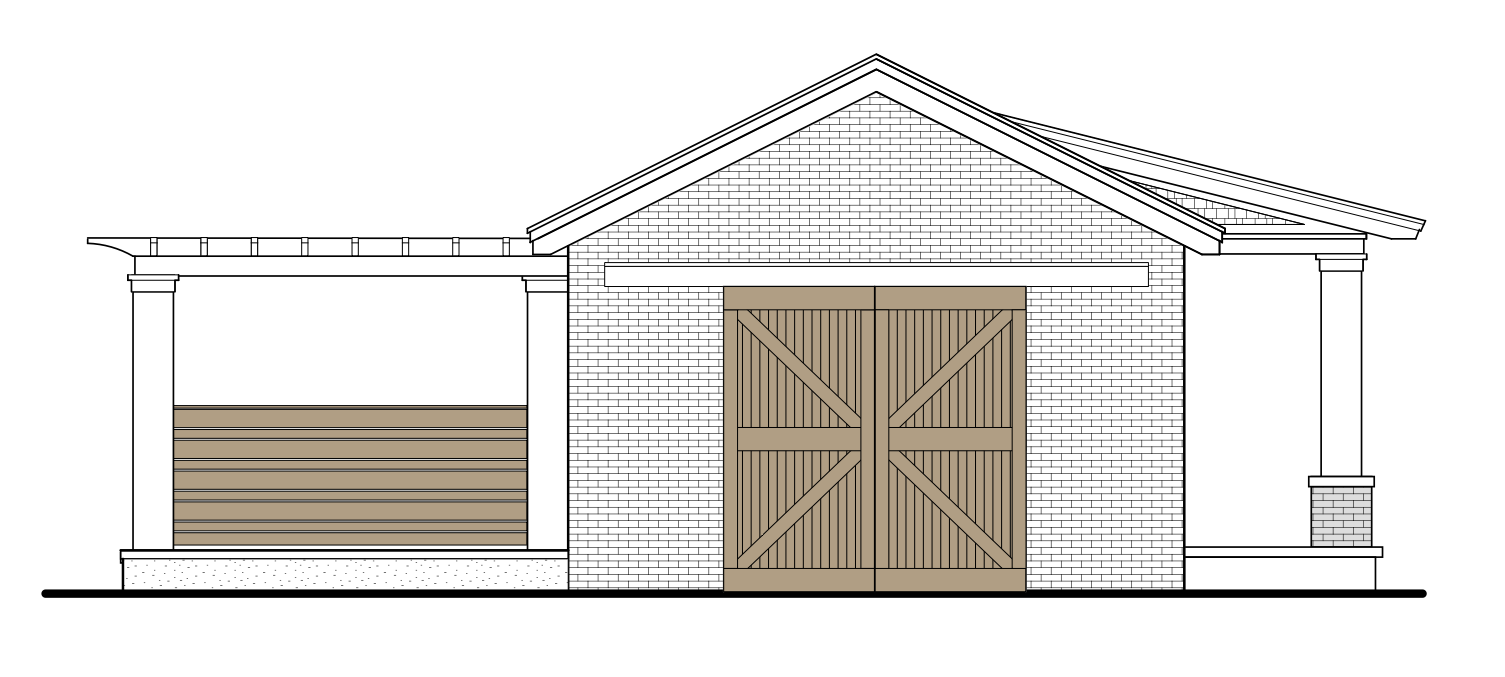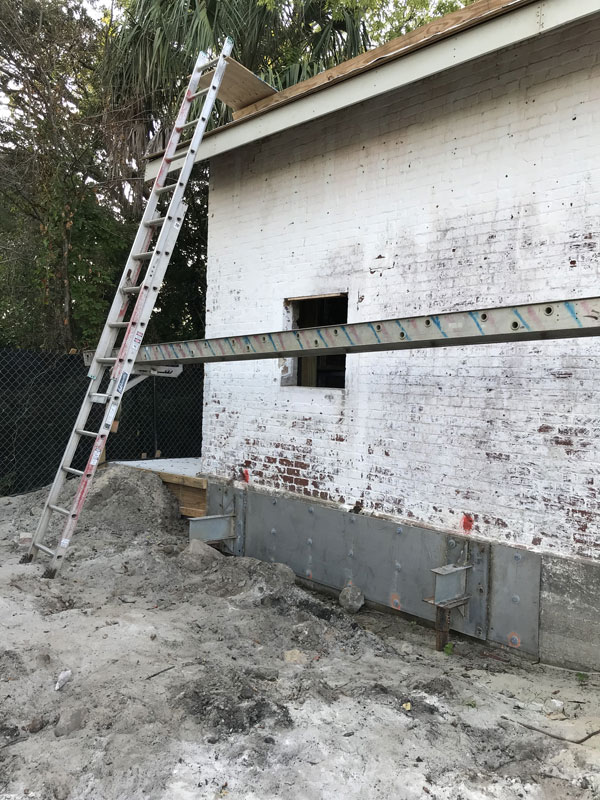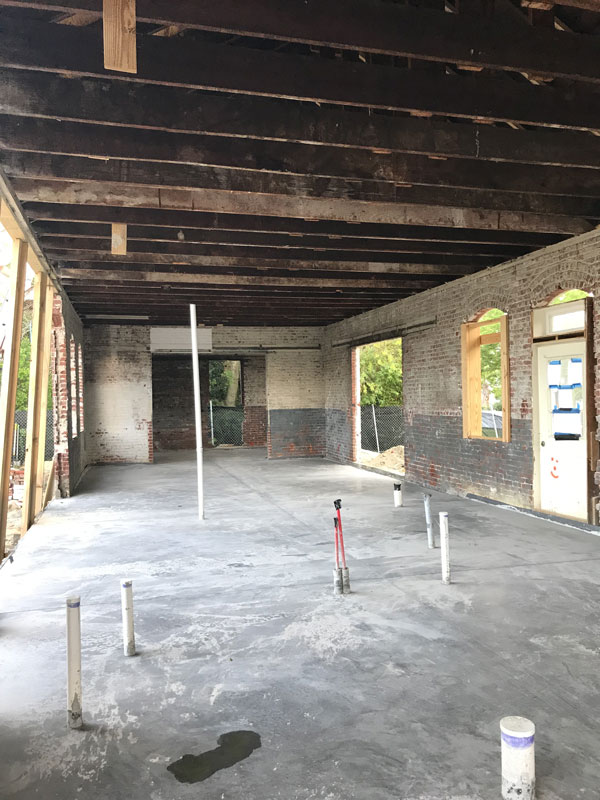The exciting part of restoring an historic structure and converting it into a residential home is the details you uncover during demolition. Finally years of layers and revisions and changes are peeled back to reveal the building’s original design. In part three of our series on the Ordinance House, we discuss the process and gems we discovered.
Preserving Historic Architectural Detail

Discovery of original architectural detail: arched brick windows and wood rafter tails
Working on a building with a modest history of being used for storage for nearby Fort Moultrie, we weren’t sure what kind of architectural details might be hidden under the layers at the Fort Moultrie 1890’s Ordinance House project. When we began demo, we found original arched brick headers over the original windows. As we proceeded, we also discovered something truly unexpected and a thrilling surprise. The original rafter tails and roof decking were still intact and in unbelievably good condition. These historic details survived exterior renovations made at a time when this building was not regarded as ‘special’ and post Hurricane Hugo.
We wanted to leave as much of the original rafter tails exposed as we could. This meant significantly reducing the size of our new front porch. We then felt it was necessary to add more wood features into the design to better reflect the history of the building. Additional wood detail would also better compliment the scale and texture of the original feature. We also decided to replace the stucco finish at the infill of the original garage style doors on the side of the building with a wood barn style door panel. We also replaced the stucco finish at the infill of the original garage style opening on the rear with lap siding.
We knew that the discovery of the original rafter tails meant we would need to make changes to our approved Design Review Board (DRB) submission. It was worth it to revise the design and to re-submit it to the Design Review Board for another approval. Happily the DRB agreed with us and unanimously approved all of the design changes requested.

Sullivan’s Island Revised DRB Submission showing wood barn door and lap siding

Sullivan’s Island Revised DRB Submission showing new front elevation
Assembling the Right Team

Foundation reinforcement of the Ordinance House
It is essential that when you are doing a restoration of an historic building that you find the right team of contractors and tradesman. For this project, the new homeowners selected Meadors Inc. to be the builder for the project. Meadors is a well respected builder in Charleston because of their skill and experience in the preservation and restoration of historic buildings. It was because of Meadors’ careful deconstruction of the property that we were handsomely rewarded when the team uncovered the original rafter tails and roof decking.
Architect, Designers, Landscapers, the Builder and other consultants all work together as a team. When working on a restoration project, the team works to identify issues and design solutions that respect the historic building. For example, we had to add some new foundations for the structure. In the process though it was important that we didn’t damaging the fragile, unreinforced 2-wythe historic brick walls of the exterior. Care and planning allowed us to do this delicate work.
We first met on site with our structural Engineer, Steve Caskie and Jim Meadors and his crew from Meadors Inc. to discuss the options. We decided to add steel plates to either side of the brick wall below grade. The plates would be bolted together to support the wall, which were in turn would be supported by new columns down to a new foundation. The alternative was to underpin the fragile brick wall to install a new foundation below the wall–no one liked this choice.
Where Are We Now?

New slab for the Ordinance House on Sullivan’s Island
We have completed the demolition phase and have started the construction of the new work. The new slab and wood framing is installed and we expect to finish the renovation and restoration of this historic industrial building in the fall of 2019. If you walk by, you can still see the modest beginnings of this old military brick building with a simple gabled roof and row of windows along the front facade as she’s transformed into a structure to suit modern living while honoring her history. It’s been a pleasure to be able to contribute to the restoration of a piece of island history and work with such a fabulous team.
Thank you for reading about this project. To catch up on older articles, read about the first part of this story and the history of the 1890’s Ordinance House in: Part One: The History of the Ordinance House. In Part Two, discover How the Ordinance House Came to be Restored.

